#Best Drones for Filmmakers
Explore tagged Tumblr posts
Text
Best Drones for Filmmakers - Dronesdeli

The best drones for filmmakers, like the DJI Inspire 2 and the Skydio 2, empower creators to craft their vision with stunning aerial shots. Featuring high-quality cameras, advanced stabilization systems, and intelligent flight modes, these drones provide the tools needed for cinematic storytelling. Elevate your film projects by capturing breathtaking perspectives and dynamic footage from the sky.
0 notes
Text
It's a well worn topic at this point but the imminent release of The Marvels has me thinking about how militaristic the Marvel Cinematic Universe is, with Monica Rambeau aka Photon, a habour patrol member in the comics, reimagined as a captain in the US Air Force.
She follows Hawkeye, who was changed from an argumentative former circus performer with a heart of gold (a character so staunchly against lethal force he once revoked his own wife's Avengers membership because she sort of, maybe, subconsciously allowed a villain to fall to his death) into a hard-nosed black ops assassin.
Sam Wilson/ Falcon made his celluloid debut as an army man with twin submachine guns attached to his wrists. It’s a far cry from his print counterpart’s introduction as a social worker by day who uses his skill at falconry to protect his neighbourhood.
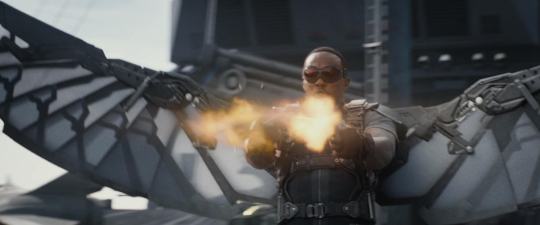
If we allow the argument that modern cinema goers are accustomed to a sprinkling of realism to make their superheroes palatable (and it’s a strange argument really- why should realism be a desirable quality in summer blockbuster escapism?) then what actually constitutes “realism”.
Sure, a man who learnt uncanny skill with a bow and arrow growing up with a travelling show couldn’t possibly hold his own alongside Hulk or Thor in the real world (and, yes, there isn’t a Hulk or Thor in the real world; as I say, this is a strange argument), but if he learned those exact same skills in some kind of military context then that somehow passes the bar for realism? The sinister upshot is that these children’s heroes become more warlike just as, globally, they reach more children than ever before.
Increasing the realism of superhero stories only serves to make them problematic. DC Comics' Batman, who is the frequently subjected to “realistic” treatments, is the prime example. If, in real life, a billionaire tooled himself up with the best weapons and body armour money can buy and began dispensing violent “justice” with no accountability, then of course that wouldn’t be a good thing. If they wore a costume with pointy ears and started calling themselves “Batman” then of course we would question their sanity. But Batman isn’t real; it’s a story. Nobody thinks The Muppet Show advocates animal cruelty. Quite the opposite, if anything. ("Not unless they're watching it", as Waldolf once heckled) Yet if a filmmaker decides they’re going to make a “grounded and realistic” remake where Fozzy is played by a real live bear wearing a pork pie hat and spotty necktie, then that's a whole other story. Suspend your disbelief and superheroes are less like the police or army and more akin to volunteers and activists, doing what they can with what they have to improve the lives of those around them. Their actions take the form of crime fighting only because that’s what makes for exciting colourful adventure stories for children.
In the MCU, even Marvel’s poster boy, Spider-Man (another champion of non-lethal solutions, known for his compassion even to his enemies and who possesses an enduring appeal to young children) is given a literal sheen of the military-industrial complex in the form of “Stark Tech” armour, replete with military grade strike drones. Tony Stark even thought to equip his 15 year old protégé-cum-child soldier with an “Instant Kill Mode”. In a moment played for laughs in Spider-Man: Homecoming, Spider-Man rejects his on-board AI's attempt to activate this feature but seems untroubled that such an option exists and, indeed, come Avengers: Infinity War, he voluntarily deploys it. It’s not clear if Spidey actually does kill any of his alien adversaries, but it seems reasonable to assume that one doesn’t say “Activate Instant Kill Mode” without the intention of ending lives. Fans are expected to smile or applaud as Spider-Man says these words, recognising the call-back to Homecoming, rather than find it a gross misrepresentation of Marvel’s most beloved character or an alarming depiction of a children’s favourite.
The MCU Avengers as a whole are a US government “initiative “. The reluctant superheroes need to be cajoled into putting their differences aside for the greater good by army top brass Nick Fury. In a tweak from the source material, the ‘H' in Fury's organisation, SHIELD, stands for ‘Homeland’, making SHIELD as explicitly American venture as opposed to it being ostensibly intergovernmental in the comics.

There is a comic book precedent for this military take on Earth's Mightiest Heroes in the form of The Ultimates, a 2002 series by the British team of writer Mark Millar and artist Bryan Hitch. The Ultimates ,however, was satire. Millar was an unreformed lefty of the old school – someone who has boasted of voting Brexit for left-wing reasons, someone who once appeared on Russia Today as a guest of George Galloway. The Ultimates took swings at the gung ho jingoism of post 9/11 America. Captain America's “Surrender!!?? You think this letter on my head stands for France?“ is not supposed to be a badass one-liner, but rather a parody of the kind of things US media outlets were saying as Jacques Chirac proved less keen than Tony Blair to follow George Bush in bringing gunboat diplomacy to the Middle East. As Millar commentated at the time:
“The Ultimates is completely different because it's a character-driven piece and (something only a few people have noticed) my attempt as a left-wing writer to tell stories about an essentially right-wing concept and cast. It's very much the Anti-Authority, if you will. Captain America and so on are fully-paid members of the US military machine and this means a very different book and approach from a gang of slightly arrogrant, left-wing, superhuman utopians like The Authority ".
Wildstorm Comics' The Authority, which both Millar and Hitch worked on (although not together), was a precursor to Ultimates, featuring a team of similarly “any means necessary” heroes, albeit with a left-wing bent. The Ultimates does have something of The Authority’s utopian streak; Nick Fury and Tony Stark genuinely want to make the world a better place for everyone. It’s very idealistic – what if the head of the military and the biggest tech billionaire actually had the people’s best interests at heart? – and arguably closer to true superhero ethos (basically “with great power there must also come great responsibility “) than those characters more pragmatic MCU equivalents.
Yet, as Millar's one time writing partner Grant Morrison (who actually ghost-wrote at least one issue of The Authority under Miller’s name) observed in Morrison’s major nonfiction work, Supergods, the likes of The Authority, The Ultimates and, by extension, the MCU represent a “capitulation” to the view “that it was really only force and violence that got things done and not patient diplomacy, and that only soldiers and very rich people had the world figured out”. If the MCU is realistic, then it’s a sad indictment of the real world where the heroes are the ones with the best tech, the best guns and no compunction about using them.
Regardless of intent, The Ultimates left a door at Marvel’s “House of Ideas” just enough ajar to allow a malign notion to creep in: “These soldier superheroes are pretty cool. What If they were like that all the time? Wouldn’t they be more popular then”?
Certainly the navy SEAL aesthetic Bryan Hitch brought to the costumes (replacing the colourful tights and capes with pouches, straps and body armour) was soon adopted by superhero tv and film productions even pre-MCU. In fact, Hawkeye's journey from carny to commando mirrors the changes in superhero attire. Most famously, Superman's appearance with the red “overpants” derives from that of circus strongmen, but seeing any photography of early to mid 20th century carnival and circus performers makes it clear the early superhero creators had them in mind when they first put pencil to paper.

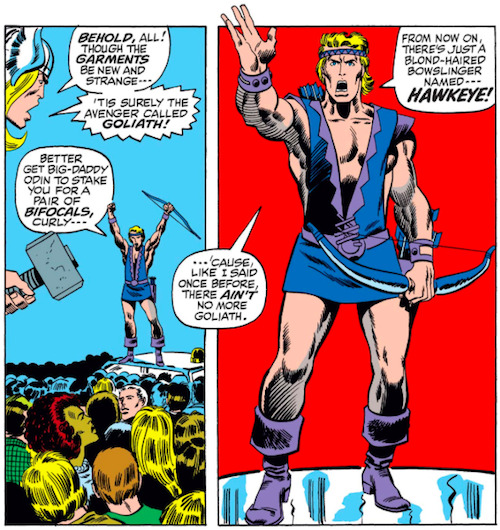
In an interview (found in Marvel Spotlight: Captain America, published in 2009) Hitch related how he showed an initial Ultimates drawing of Captain America with a machine gun to Grant Morrison, which Morrison then “described as the most obscene Captain America image [they’d] ever seen”. (NB: Morrison has since adopted gender neutral pronouns). Perhaps Morrison said this with glee, in on the joke with their friends, but in the years since, Cap with a gun became a common sight, even in family-friendly movies (where it was divorced from the irony of The Ultimates).

By a 2015 interview, Morrison lamented the fact that “the Avengers work for the government, and it's been like that since Mark [Millar] did The Ultimates” and said they were “bored with the idea that the best superheroes can represent is some aggressive version of the military. [...] They're supposed to be champions of the oppressed, they help ordinary people, they make things better for people. They don't prop up our grotesque, doddering culture of war and aggression”.
That same year Morrison introduced a new comic book superteam in the pages of The Multiversity. Pointedly the text likens this group, named “Justice Incarnate”, to a “cosmic neighbourhood watch” rather than any formal military or law-enforcement institution.
Millar himself reunited with his Authority collaborator Frank Quitely to create the comic Jupiter’s Legacy, which comes across in part as an apology for The Ultimates and all it begat. It concludes with the protagonists, Chloe Sampson and Eddie "Hutch" Hutchence taking up superhero mantles and promising not to make the moral compromises of their predecessors:
“No more bowing to authority and insitutions. No more deference to people in power”.
“There's a dignity in public service we mistook for old-fashioned, and a humility in having a secret identity, living among the people we protect.“

The Avengers, Marvel’s breakthrough billion dollar box office 2012 movie, by contrast, concludes with Iron Man dropping a nuclear bomb on the “Chitari”, an invading alien army and it seems likely this influenced Morrison’s comments on modern superhero stories.
In Supergods, Morrison
describes their childhood dread of nuclear weapons. The child of “ban the bomb” activists, the “gruesome hand-drawn images of how the world might look after a spirited thermonuclear missile exchange” which illustrated their parents anti-nuclear literature struck terror into the young Morrison. Therefore they seized upon superheroes as being an idea powerful enough to counteract – and overcome – the idea of the bomb.
“It’s not that I needed Superman to be “real,” I just needed him to be more real than the Idea of the Bomb that ravaged my dreams”.
Within the narrative of the movie, Iron Man takes the only option available to him to save New York. Destroying thousands of alien lives to save thousands of human ones. But The Avengers isn’t a documentary; the scriptwriters could have written a satisfying denouement which didn’t involve mass murder. They could at least have included some words of regret by the heroes over what it took to win, acknowledging that killing is not the ideal solution. Instead the Avengers trade banter and eat shawarma, collective conscious clear.
There is a moment in another Grant Morrison work, Final Crisis, which always brings the MCU to mind. In Final Crisis #3, drawn by JG Jones, (published in 2008, the same year the MCU began) “evil gods” from a higher plain of existence have been reincarnated on Earth. In order for the Justice League to counter this threat, a “draft for Superheroes” is implemented. Green Arrow (a Batman-a-like character who was subsequently reinvented to embody the countercultural sentiment of the late 1960s and has since served as the social conscious of the superhero set) responds to receiving his draft notice thusly:
“If anybody falls for this authoritarian, militaristic crap, it’ll prove I’m absolutely right about absolutely everything!... “
Cue the next page, where the drafted heroes have gathered en mass (including Green Arrow, impotently shaking his fist.)

Such an assemblage of characters in usually a triumphant moment in a summer "event" story, but here is framed as a sign that evil already has it’s hooks into reality. This world has fallen to the darkness and the superheroes who inhabit it are too morally compromised to realise it.
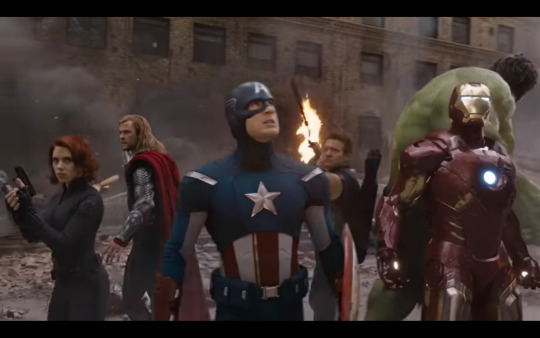
#the marvels#mcu#the avengers#grant morrison#mark millar#bryan hitch#the ultimates#marvel#dc comics#the authority#opinion#long form#comics#movies#superheroes#superhero#spider man#mcu critical#marvel critical#mcu criticism
77 notes
·
View notes
Text
I recently found one of my most helpful writing resources. I read it as a film undergrad. I still think about it to this day, especially his "Levels of Conflict" chart. And I found it as a free PDF!
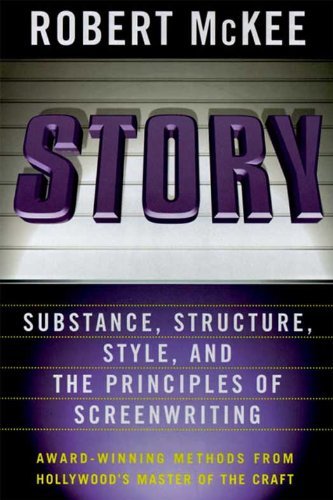
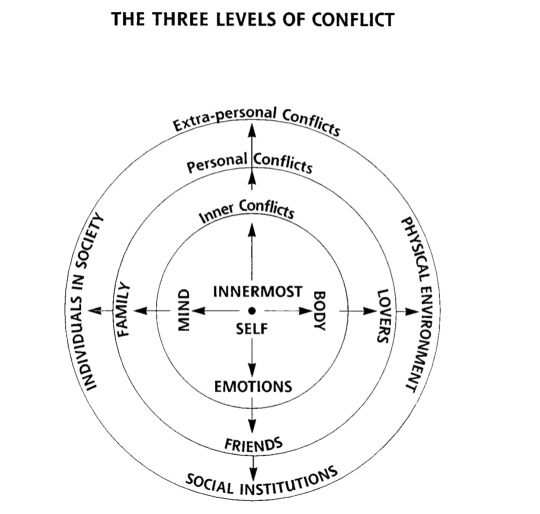
Internet Archive Story: Robert McKee
Some NOTES:
-It is screenwriting, so there's a lot that may not be necessary in regular writing. You don't need to be as "zippy" in other forms of writing. But it's a great resource if I'm having problems with figuring out characters and if scenes are necessary. It's great for developing an eye for editing.
-It breaks down how certain genres of writing work, including Dramatic Irony, Comedy, Drama. It talks about how to fix plot holes with dialog. Honestly, I think I'm a decent dialog writer because of this book.
-it is a DENSE TEXTBOOK. it goes into an insane level of detail that would bore anyone if you read it all the way through. Sometimes it sounds like an alien dissecting human behavior through dizzying diagrams and charts. (Apparently his screenplay seminar includes a 6 hour frame by frame analysis of Casablanca so...this guy is thorough) Do not read this all the way through. If anything, the best sections are Part 2 and Part 3, and chapters 16 and 17. (you seriously could just rip out Part 1, it's just him droning about filmmaking) He does a great job with organizing things so you can pick and choose what speaks to you. He highlights key concepts in bold.
"Story is metaphor for life, and to be alive is to be in seemingly perpetual conflict."
"Nothing moves forward in a story except through conflict."
"True character is revealed in the choices a human being makes under pressure — the greater the pressure, the deeper the revelation, the truer the choice to the character's essential nature."
So yes, it is imperative to put blorbo thru the horrors. in fact it's the entire point.
37 notes
·
View notes
Text
Getting tangled in a web. A Madame Web, you could say - An Anya Corazón centric Madame Web review (SPOILERS AHEAD)

So, I originally did not planned to pay to watch MW (I did considered watching it later on for free if just to do a funny review), but my best friend wanted to watch it to roast it, so as meanwhile it was her I was like "I'm in".

(Completely unrelated, but adding to the MW watching experience, the top of the projection was off-screen as you can see, and it was like that for 20 minutes, so that was a great sign)
This is going to be focused entirely on Anya, so to give some quick thoughts about the movie itself that you've probably heard from other reviews: yeah, it's bad. We were making fun of it at the beginning but by the last hour we were bored and wanted it to end. The damn stolen taxi got laughs from us, so there's that.
Now, Anya.

Isabela Merced does a fine job with the material she's given. To the credit of the movie, she and Julia are the most likeable of the main protagonists, with Anya being the most sympathetic of the bunch. In what was the cringest secene in the film, were the girls dance to Toxic by Britney Spears on a restaurant's table (my friend was dying, since we're filmmaking students and she was lamenting that this was directed by a woman and she just keep saying that absolutely no girl would act like that and do that) she at least was the only who resisted the most from joining.
This version, as you could guess by her costume, is mostly based on the Marvel's Spider-Man 2017™ cartoon Anya.
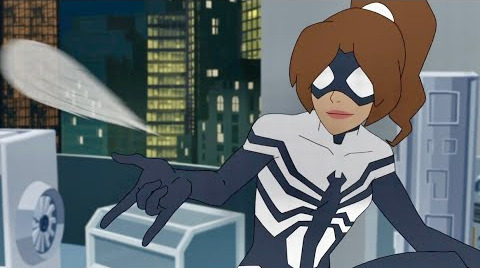
She's an academic genius who spits out sciency words and sentences. Even her bolas here seem to have some tech-integrated in them, makingh them more like drones than her traditional ones, at least that's what they look like for like the three seconds they appear on-screen. They still failed to give her a pony tail.
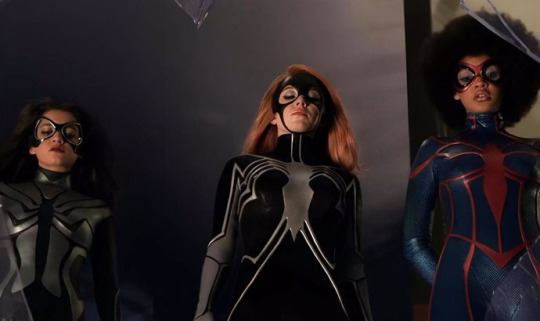
Our first look of her is alongside the other Spider-Women in a future vision were they violently attack and murder in cold blood Ezekiel. They attack him at his apartment and throw him out of the building as they stare at him as he falls.
This is in contrast to her general depiction of her being in a constant struggle to give up to her vengeful tendencies.
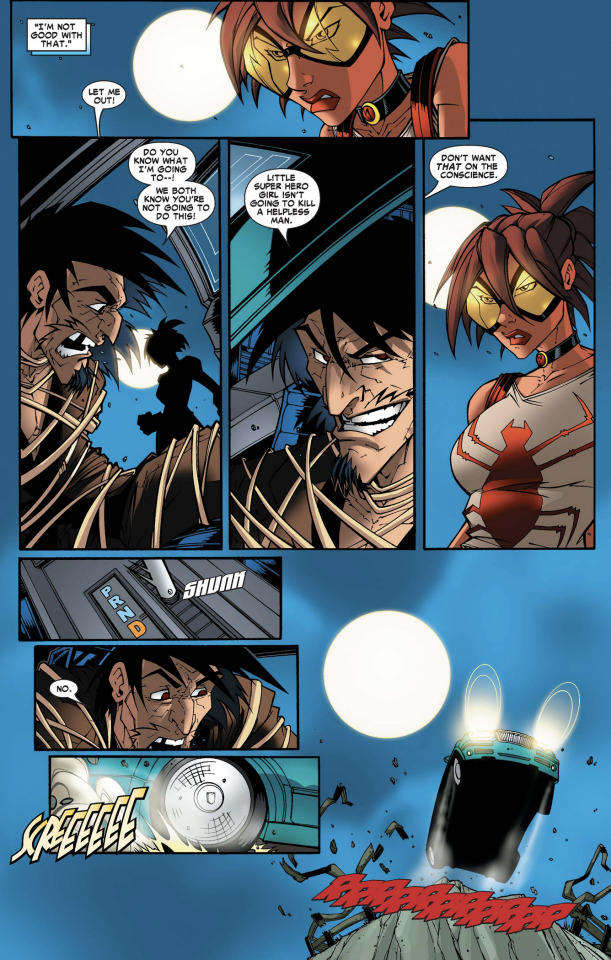
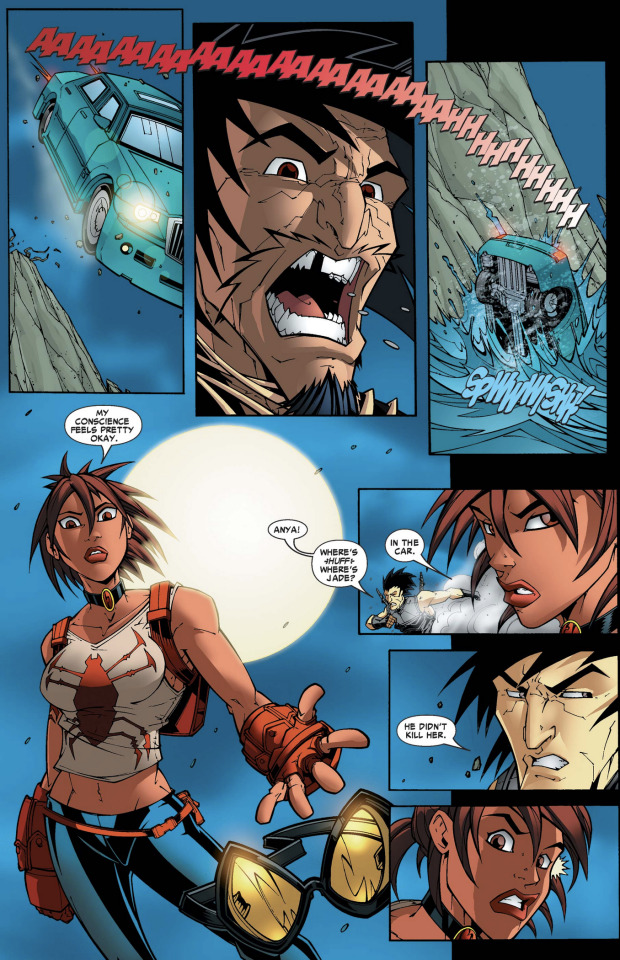




TO THE FILM'S CREDIT, it also heavily implies that they were never going to kill him, but that "vision" represented how the Spider-Women trio would lead to his downfall. So if he never chased them he would still be alive in the future.
Now, among other changes...
In a previous post, I reacted strongly about the movie changing her nationality to Peruvian. I got responses saying that the reviewer was wrong and she wasn't peruvian in the film. Having seen the film, yes, i can confirm that she's not peruvian.... they still changed her nationality, though.
In the comics Anya is mexican from her mother's side and puertorrican from her father's. In the movie it's stated that her mom died when she was a child, while his dad was deported. This means that they did changed her nationality, since puertorricans are considered US citizens and therefore can't be deported. It's never stated where exactly she comes from. she's just generic latina.
Althought a illegal immigrant approach could potentially work, the movie does nothing with that beyond having it being a excuse for Anya to be adopted by Cassandra by the end of the movie. Let alone, the fact that the story of the latina character being an ilegal immigrant feels cliche by this point. Even more egregious, to contrast with the comic, her dad is a puertorrican highly respected reporter who was even hired by the Fantastic Four, turning him into a illegal immigrant pretty much added nothing to the story beyond having a orphan Anya.


Overall, in their attempt to make their own version of Anya, as well as shoehorn her into a movie that was not about her, we ended up losing one the most interesting and charming characters and origin stories that can hold a movie by her own.
At the end of it, this movie didn't improve Anya's perception to the general public, but it didn't hurt it either.
It tells you a lot that her cameo in Across the Spider-Verse got more people talking about her than this movie did.

17 notes
·
View notes
Text
Sci-Fi Saturday: The Man from Planet X

Week 27:
Film(s): The Man from Planet X (Dir. Edgar G. Ulmer, 1951, USA)
Viewing Format: Streaming Video (Amazon)
Date Watched: 2022-01-28
Rationale for Inclusion:
So far the 1950s has yielded films about a flying saucer that was not extraterrestrial in origin, an accidental trip to mars, and a trip to the moon. What we have not had yet is a tale of aliens visiting the Earth, at least until this week.
The Man from Planet X (Dir. Edgar G. Ulmer, 1951, USA) was selected for inclusion based upon the fact that it was the earliest film of its subgenre released during the 1950s. It beat out the more widely known The Thing from Another World (Dir. Christian Nyby, 1951, USA) into release by roughly a month. My being a fan of director Edgar G. Ulmer's pre-Code horror film The Black Cat (Dir. Edgar G. Ulmer, 1934, USA), which pitted Boris Karloff and Bela Lugosi against one another for the first time, also was a factor in this film's selection.
Reactions:
The plot of The Man from Planet X boils down to a first contact situation that goes from problematic to outright messy because of a bad apple scientist wanting to exploit extraterrestrial technology. Overall, my partner and I regarded the film as stereotypical and fairly unremarkable, but it had a couple of interesting quirks.
Instead of setting the action in the southwestern American desert, as many sci-fi films of the 1950s would, the action takes place in the atmospheric Scottish highlands, which gives Ulmer a chance to exploit skills and imagery picked up as a set designer in the German silent film industry.
More noteworthy, the visitor from Planet X (Pat Goldin) communicates via musical tones. This method was unique at the time and would inspire a more spectacular interpretation in Close Encounters of the Third Kind (Dir. Steven Spielberg, 1977, USA).
However, what stuck with me after the film ended was that the Earthlings may have murdered refugees from a dying planet. Late in the film, one of the men who first encountered the alien, American reporter John Lawrence (Robert Clarke), discovers that the alien is from the mysterious planet that is passing closely to the Earth on its way out of the solar system and mind controlling villagers in order to turn its crash landed ship into a wireless relay station to communicate with their comrades on that planet. Planet X is doomed, and the aliens are trying to escape to a healthy planet. The villagers not under alien influence decide the best path forward is to destroy the spacecraft turned comm station and prevent the invasion, which they do, along with the visitor from Planet X.
Since the alien cannot communicate their intentions to anyone other than the exploitative and cruel Dr. Mears (William Schallert), I found myself wondering if the aliens were actually invading, planet annihilating locust types as later seen in Independence Day (Dir. Roland Emmerich, 1996, USA) or simply desperate refugees. The villagers assume malevolence on the alien's part in turning their neighbors into mind controlled worker drones, but given that the alien failed to be understood by the benevolent Professor Elliot (Raymond Bond), and the man who could understand them attempted to murder them, perhaps it was a desperate attempt to save their race.
My interpretation definitely comes from a lifetime of watching Star Trek and witnessing countries regularly refuse aid to refugees of war and political persecution. Despite the fact that the Holocaust was a relatively recent memory for the filmmakers, I do not think they crafted their narrative with that in mind. Ultimately, I have to tell myself, "The filmmakers probably didn't spend this much time thinking about the plot or its symbolism, you shouldn't either."
The Man from Planet X was built using interesting ideas, but does not make use of them as well as future filmmakers and storytellers would.
5 notes
·
View notes
Text
Hazuki Izumi (Reno Komine) stands on the edge of a rooftop looking out at the city beneath her. A clutter of competing architecture styles and buildings at various points of development: scaffolding, newly-built, maturing, declining, abandoned, condemned. Traffic lights glow, cars drone, and roads curve. A web of powerlines connects every part of the city. Hazuki is deep in thought, contemplating something or other, almost as if she’s listening to something we can’t quite hear. Her friend Mao (Shinsuke Aoki) notices the rooftop figure and approaches her as he becomes concerned that she might jump.
This scene takes place in August in the Water (1995) but variations of it can be found in a number of Japanese films and anime of the late 1990s to early 2000s. At the time of release these films and series belonged to different genres and production cycles yet retrospectively we can identify a fascinating pattern of imagery, themes, characters and even locations that recur to form an enigmatic genre called denpa. Little has been written about it in English, so allow me to venture forward.
‘Denpa’ is a Japanese word that means electromagnetic wave or radio wave. Within the genre, characters tune into these waves and feel their effects: they sense things, hear voices and see spectres, indeed the stories of Chiaki J. Konaka begin this way, including his Lovecraft-inspired psychological horror Serial Experiments Lain (1998) and Marebito (2004). The characters are susceptible to the waves due to alienation caused by their oppressive surroundings which is depicted through a distinct, industrial aesthetic: antennas, chain link fences, telephone poles, a web of powerlines across the sky, trains, manholes and sewers, grainy and distorted footage, a muted colour palette. This imagery reoccurs across denpa fiction, from the visionary anime of Satoshi Kon (Perfect Blue 1997, Paranoia Agent 2004) to the live-action poetry Shunji Iwai crafts out of adolescent cruelty (Picnic 1996, All About Lily Chou-Chou, 2001).
These bleak,alienated urban settings raise questions of tradition vs modernisation, mass-communication and a critical look at new technologies. Denpa situates these themes amongst references to folklore and the paranormal such as ESP, hauntings, aliens and spirits a combination explored by both the cult horror favourite Boogiepop Phantom (2000) and influential franchise starter Ring (1998). These supernatural beings are known to inhabit different realms and through electromagnetic waves these beings can cross over to our world, and humans can cross over to their worlds. The blurred lines between these spaces are illustrated with surreal imagery and experimental filmmaking. Such creative innovation can be found in the surreal psychological torment of Hideaki Anno (Neon Genesis Evangelion 1995-7, Love & Pop 1998, Ritual 2000) and in the breath-taking urban dreamscapes woven by Gakuryu Ishii (August in The Water, 1993’s Tokyo Blood). Within this cocktail of urban alienation and supernatural forces are plot points such as rumours, conspiracy, mental illness, and delusion often with cosmic and apocalyptic consequences, best embodied by the hypnotic horror of Kiyoshi Kurosawa (Cure 1997, Pulse 2001).
So far, denpa has only appeared as a loosely defined genre label on English-language databases for anime and videogames, on the occasional blog post, a handful of letterboxd lists and one lone essay [1]. It is at once both recognisable yet hard to define. I understand it on an emotional level, I can identify it as a vibe, yet I want to tease out the details and define it in more concrete terms: what makes something ‘denpa’?
The genre derives from ‘denpa-san’ or ‘denpa-kei’ a name for a type of person that emerged in the late 20th century. Think of denpa-san as analogous to ‘tin foil hatter’ – someone vulnerable to paranoia, conspiracy theories and delusions hoping that the foil will block out those invasive electromagnetic waves. Or maybe they’re already at their mercy, following instructions heard via the waves and doing unsavoury or even dangerous things. The term initially hit the mainstream consciousness in association with the 1981 ‘Fukugawa Street Murders’ where a 29-year-old man indiscriminately stabbed passers-by, killing several people and injuring more. The highly-publicised trial hinged on the controversial defence of insanity: the perpetrator argued that they were driven to murder after years of torment from electromagnetic waves [2]. Over time the term expanded to become associated with creepy, unpopular people in general, those on the fringes of society with unusual quirks and obsessions.
It is here that the term overlaps with another: ‘otaku’. A social outcast who obsesses over a hobby to the detriment of their social life. Think ‘geek’ but usually uttered with more contempt. Otaku is typically associated with anime, but contrary to popular belief can be about many subjects from videogames to cars. What ties them together is the negative effect it has on the self. Much like denpa, the term otaku gained traction in association with a horrific crime; in the 1990s it was elevated from merely a pejorative label to the centre of a moral panic in relation to the years-long trial of a serial killer nicknamed by the media as ‘the otaku killer’ for his extensive video collection of pornography and horror films [3]. In the years since, the collective otaku have shaken off the worst of these associations and become a phenomenon as they developed a distinct culture and became a major economic force that has been embraced by the media they obsess over. On the darker end of the subculture some favour the fantasy world of their hobby over the real world and get lost in it, which in itself has become a common denpa narrative with an iconic example being the idol otaku in Perfect Blue.
Critics ascribe the emergence of denpa-san and otaku to society at the time. The Japanese economic bubble burst in 1991 and the decade that followed became known as ‘The Lost Decade’. The population faced a recession which stunted young people as they came of working age. And yet Japan was known on the global stage to be at the forefront of home electronics and new technology. This was in tension with traditions of the past and complicated their national identity as new cultural connotations outpaced traditional ones posing the question: can an old culture survive as a new one emerges?
The development of these new technologies also introduced new issues as they quickly became part of everyday life. Camcorders in every hand, phones in every pocket, so easy to use that soon everyone had one without knowing how they really worked. Life was changing as there was now constant recording, growing access and intimate conversations were now held not in person but via phones and on internet forums. As people became increasingly reliant on these technologies, people began to wonder, what is the existential cost of these new conveniences?
From moral-panics and national identity crises to new technologies denpa fiction responds to this new cultural landscape.
The war between tradition and modernization often forms the backdrop of denpa fiction in urban spaces where a dedicated few keep old customs alive, while others push on for progress. Gakuryu Ishii (previously known as Sogo Ishii) depicts the tension of this conflict well in August in the Water where participants of the centuries-old festival in Hakata pulse through the city in historical costumes with traditional matsuri floats surrounded by modern buildings and stopped traffic; Ishii finds strange beauty in the cityscapes that engulf and imprison his characters. Investigations lead Detective Takabe (Koji Yakusho) in Cure to abandoned buildings and disused factories which signal the failure of a once-promising industry. In Love & Pop and Tokyo Blood, supporting characters are construction workers who signify this changing landscape as they meet on noisy building sites that are the eyesore we must endure for another dubious future.
The rooftop is a recurring location for these films. It can be a place for a clandestine conversation with a confidante, or a place for solo contemplation. The sight of a lone person on a rooftop can be startling to passers-by: the threat of suicide looms and in denpa often does happen. Cinematographically speaking it’s an opportunity to view an urban vista: the buildings, antennas and powerlines that populate the skyline. Again and again characters are drawn to the rooftop where they can get the clearest signal to the electromagnetic waves that mesmerise and influence them.
Alternatively, the clearest signal can be found by going right to the source. In Serial Experiments Lain we meet Lain’s father (Ryusuke Obayashi) at his impressive 6 monitor desktop and over the course of the series Lain’s (Kaori Shimizu) simple computer set-up evolves to be larger and larger. A soundscape is built from keyboard tapping, mouse clicking and monitors gently beeping. Denpa characters are often found hunched over a desk or workstation in the dark, the only light source being the glow of a screen or the small bulbs of a switchboard that gently whir as a pen scratches while detailed notes are being made. It’s an image with unhealthy connotations indicating obsession and someone losing touch with the outside world. In Boogiepop Phantom, the deskbound character is a videogame otaku finding solace in a fictional fantasy world. In Cure they’re a detective and in Ring a journalist whose respective investigations turn fanatical as they uncover disturbing histories. In each instance the foundations of their worldview will soon be shaken and their mental health questioned as conspiracies and paranormal explanations become more and more likely. Are the characters’ paranoid, or are they seeing things clearly for the first time?
These paranoid thoughts or deteriorating mental states are often heard through voice-over narration. Depending on the film the voice-over could be the trademark psychological introspection of Neon Genesis Evangelion, or the expansive philosophical musings of August in the Water or even the sinister and somewhat incoherent rambling of Marebito. Though superficially different, what they share is a painfully personal and poetic type of soliloquy.
Alongside narration, different psychological states are expressed through surreal imagery and experimental filmmaking, which often leads to a striking use of mixed-media with live-action moments in anime. In Boogiepop Phantom, a drug-addled videogame otaku experiences visions which are depicted by heavily edited live-action footage in a break from the traditional animation of the series. In Serial Experiments Lain there are animated character figures over live-action backgrounds which has the uncanny effect of blurring the lines between the different worlds that Lain traverses. In the case of Neon Genesis Evangelion: End of Evangelion, the sequence of live-action footage breaks the diegetic barrier between the text and audience, seeming to directly address not only the delusions of its’ characters but its own otaku fandom.
This subtle sense of self-awareness can be seen in the eerie experience of watching characters watching screens. Frames within frames or looking at a picture within a picture, voyeurism becomes infinite. New technologies allow people to see people through a thick glass lens or a pixelated screen. Distant yet paradoxically seeing each other more intimately than ever. In Perfect Blue this newfound intimacy fuels the obsessions and delusions of both Mima and her otaku fan.
The spectre of denpa is not limited to Japan. The same themes and same motifs can be found in English-language films from around the same time. There is Donnie Darko (2001), Richard Kelly’s film about a schizophrenic teenager who is told to commit crimes by a phantom in a rabbit suit and whose survival of a near-death-experience has apocalyptic consequences. You can find denpa in the films of M. Night Shyamalan: from the delusion of Bruce Willis in The Sixth Sense (1999), to the haunting image of mass rooftop suicides in The Happening (2008) and to the potent mix of aliens and religion in Signs (2002). Even in the music video of Eminem’s Stan (2000)– in which a disturbed otaku hunches over a desk under a perpetual raincloud. When I recognise denpa motifs in films made outside Japan, I begin to think of denpa less as a genre and more as a zeitgeist. A restless, nihilistic gen x moan of exasperation. That feeling of living in The Matrix (1999); groaning at the end of the century and looking to the new one with only pessimism. Yes, there are new technologies but there are as many negative possible outcomes as there are positive ones. It seems inevitable that people will succumb to their worst impulses.
28 notes
·
View notes
Text
This Might Be The First Newborn Great White Shark Ever Recorded
The 5-foot great white was filmed off the coast of California covered in a strange, milky substance that could be uterine fluid.
— By Jason Bittel | January 29, 2024 | Photographs: By Carlos Gauna

Is this first-ever recorded sighting of a newborn great white shark? A milky white film—which scientists suggest could be a sort of uterine "milk"—flaked off the young shark's tail as it swam off the coast of Santa Barbara, California. Photographs By Carlos Gauna
For as much time and money as people have spent studying and filming great white sharks, no one has ever witnessed one being born. But new footage out of California might be the next best thing.
On July 9, 2023, filmmaker Carlos Gauna and organismal biologist Phillip Sternes were following sharks with a drone off the coast of Santa Barbara. They’d already captured footage of a few larger great whites, but then something completely unexpected drifted up out of the murk.
“Toward the end of the day this peculiar-looking white shark appeared, and we were both super excited,” says Sternes, a Ph.D. student at the University of California, Riverside.
youtube
At just under five feet long with chubby, rounded fins, the duo knew they were looking at a very young great white. (For comparison, adult great whites can stretch up to 21 feet long.) But as the drone zoomed in, it caught something never seen before—a milky white film that appeared to flake off the young shark’s tail as it swam.
While no one can say for sure what the white material is, Sternes suggests it may be a sort of uterine “milk” used to nourish newborn sharks in the womb. Another possibility is that the shark has a skin condition that has never been described before.
“Both scenarios are highly significant,” says Sternes, who together with Gauna co-authored a study announcing the findings today in the journal Environmental Biology of Fishes.
“This is extremely rare. White shark birthing locations have remained extremely elusive for the scientific community,” Sternes tells National Geographic in an email. “We think we have a piece to the puzzle now. If this is a birthing location, conservation aspects must be considered.”
‘A Really Unique Observation’
To understand just how rare a sighting of a newborn great shark is, you need to first understand that we know surprisingly little about how the world’s largest predatory shark reproduces.
“I think it’s incredible,” says Greg Skomal, a shark biologist with the Massachusetts Division of Marine Fisheries who was familiar with the footage but not involved with the new study. “People don't realize that some of the most basic questions about white shark reproduction are unanswered.”
Skomal cautioned against making any major conclusions based on the footage, however.
“It’s like any observation. You only have so much information, right? You have the imagery. You got the date, the time, the location. And the rest is speculation,” says Skomal, who is also author of Chasing Shadows: My Life Tracking the Great White Shark.
That said, Skomal did acknowledge that the facts presented would seem to point toward the shark being a newborn.


Scientists know surprisingly little about the reproduction of great white sharks—so the discovery of a birthing site would go a long way to advancing our understanding of these animals. Photographs By Carlos Gauna
For instance, the area where it was spotted has been thought to be a great white nursery, as first-year sharks have been documented there before. And Skomal says the shark’s coloration, shape, size, as well as the appearance of the milky white fluid all suggest it’s extremely young.
“That’s led researchers to think it’s a newborn white shark, and it probably is,” says Skomal. “The question is, when was it born? Is it hours, or days [old]? We don’t know that.”
What This Means For Research
National Geographic Explorer Gibbs Kuguru, a scientist who studies the DNA of sharks, says that the sighting is “a game-changer”—particularly if the white fluid is what researchers suspect it is.
“The fact that we have a shark in the process of shedding its “amniotic fluid” is compelling evidence that we're looking at a newborn, which is critical because it strongly suggests the shark hasn’t strayed far from its birth site,” he says. “Also, considering the decades of research about finding the elusive mating and birthing locations of Great Whites, stumbling upon a potential pupping ground like this is nothing short of radical.”
Because ocean animals spend the majority of their lives below the water’s surface, sometimes discoveries must wait until scientists happen to be in the right place at the right time. That was certainly the case when scientists witnessed a humpback giving birth for the first time in March 2021.
“We very rarely ever get to see a live newborn white shark, which could have been born within hours,” says Skomal. “And if that’s the case, this is a really unique observation.”
Great white sharks are listed as vulnerable to extinction by the International Union for Conservation of Nature, with the overall population thought to be decreasing. Learning more about where they start their lives would be critical information for scientists seeking to safeguard the future of the species.
As for Sternes, he says, “I look forward to receiving feedback from the scientific community.”
#Youtube#Animal 🦔 🦓 🦒 🦈#Great White Shark 🦈#Newborn Shark 🦈#Jason Bittel#Research#Researchers#National Geographic Explorer | Gibbs Kuguru#Santa Barbara | California | United States 🇺🇸#University of California | Riverside
7 notes
·
View notes
Text
Elevating Your Vision: Dubai Photography and Videography Experts

Dubai is well known for its abundance, creativity, and stunning scenery. In this colorful environment, the fields of photography and videography bloom with experts who combine cutting-edge technology with creative vision. These professionals from a leading Dubai photography company grab opportunities to create visually stunning works of art that enrich the story and significantly impact viewers.
Skilled experts improve your vision, turning momentary experiences into classic memories. They can handle the city's many scenes with a keen eye, technical skill, and local knowledge, resulting in images and movies that will stick with you for years.
The Art of Photography in Dubai
Dubai's photographers are known for their expertise in the field. Using cutting-edge tools and an acute sense of detail, they produce breathtaking photos beyond the ordinary. Every picture, from the soft desert views to the shimmering buildings of downtown Dubai, tells a different story about the city's blend of modernity and legacy. Whether covering events, taking portraits, or shooting architecture, Dubai's photographers are skilled at capturing moments that appeal to viewers worldwide.
Mastering the Craft of Videography
Dubai's videography experts are known for their ability to create visually captivating stories. These experts create cinematic experiences through editing, story structure, and cinematography. They are not only filmmakers but also storytellers. Dubai's videography talents bring ideas to life on screen, engaging viewers and making a lasting impression. From corporate movies demonstrating the city's business power to event footage capturing the thrill of cultural festivals, they truly make an impression.
Innovations in Aerial Photography and Videography
One of the most powerful aspects of Dubai's photography and filmmaking scene is using drones to take photos from above. Using drone technology, these experts can capture stunning photos above the city's well-known skyline, stunning buildings, and wide environment. Aerial photography and videography, including top-tier videography service Dubai, give the visual story a dynamic perspective, giving viewers an exclusive viewpoint and immersing them in Dubai's splendor from above.
Finding the Perfect Fit: Considerations for Choosing Your Expert
Your goals and vision will determine which of the many skilled photographers and videographers Dubai offers to help you choose the right partner. Here are some important things to consider about:
Portfolio Review: Spend time browsing potential candidates' online portfolios to understand their style and ensure it aligns with your vision. Look for a compatible aesthetic that resonates with your liking, whether a surprising, high-contrast design for architectural photography or a light and airy approach for portraits.
Knowledge and Skill: Seek out experts in your chosen field, such as architectural photography or documenting hectic events. Look beyond the number of years of experience to determine if the photographer or videographer has worked on projects or with clients similar to yours by looking through their client portfolio.
Collaboration and Communication: To provide a productive and satisfying encounter, look for somebody with whom you can share your ideas and choices. Please set up a consultation to assess their communication style and personality. Your ideal fit will be someone who actively listens to your vision, makes innovative suggestions, and creates a collaborative environment where you feel comfortable sharing your ideas.
Rates and Budget: Establish a budget in advance and ask the photographers or videographers you have narrowed down for quotations. Be open and honest about the expectations and scope of your project. Never be scared to haggle, but remember that sometimes the best deals are only those with the lowest price.
Customer Testimonials: Review previous customer reviews and testimonies to learn more about the work ethic, responsiveness, and quality of work the photographer or videographer can do.
Collaborations with Brands and Events
Dubai's photography and videography experts, particularly those from reputable Dubai photography company, are in high demand because of their prowess in working with companies, events, and brands. They adapt their talents to suit a variety of customer objectives and recognize the value of visual storytelling in marketing and promotion. From event coverage for esteemed events to product photography for high-end labels, these professionals infuse every assignment with innovation, professionalism, and a deep sense of brand identity. Their partnerships produce aesthetically spectacular content that engages viewers and increases engagement.
The Impact of Technology and Innovation
Technology and innovation greatly affect Dubai's booming photography and videography industries. Urban experts are adopting inventions like virtual reality (VR) and augmented reality (AR) to frame immersive visual experiences. This technology gives viewers interesting new ways to interact with information by improving storytelling. Dubai's forward-thinking attitude to technology means that its experts in photography and videography are constantly at the forefront of invention and creativity, pushing the limits and setting new standards in visual communication.
The Value of Local Knowledge
A photographer or videographer in Dubai adds value beyond technical expertise with local understanding. They know the best spots for photos, the hidden treasures of the city, and the subtleties of navigating different areas. This knowledge results in more seamless shoot coordination, effective time management, and a stronger bond with the city's distinct character captured in your finished shots.
An architectural photographer at Me Focus, who is experienced in capturing Dubai's always-changing scenery, can suggest the ideal time of day to get golden light photos of the Burj Khalifa. For your sunset photos, a travel photographer may know of a remote location in the desert with stunning all-around vistas. Local knowledge also makes obtaining permits to visit particular areas easier, making the shooting process less stressful.
Conclusion: Elevate Your Vision with Dubai's Experts
The professionals at Me Focus, Dubai, specializing in photography and videography, including videography service Dubai, are more than just those with cameras. They are visionaries, inventors, and storytellers who enhance visual experiences and make a lasting impression on viewers worldwide. These professionals guarantee that every moment is turned into a remarkable visual masterpiece, whether taking breathtaking pictures that highlight the beauty of the city or creating captivating, motivational cinematic videos. In Dubai, creating art that uplifts, inspires, and unites people worldwide is the true essence of photography and videography.
3 notes
·
View notes
Text
Laura Poitras
youtube
Journalist, filmmaker, and artist Laura Poitras was born in Boston in 1964. Poitras shared the 2014 Pulitzer Prize for public service for her reporting on the NSA's mass surveillance. She won the 2015 Academy Award for Best Documentary for her film Citizenfour, documentary about Edward Snowden. In 2016, Poitras had a solo exhibition at the Whitney Museum that focused on issues such as torture, the war on terror, and the US drone program. Her 2022 documentary All the Beauty and the Bloodshed followed Nan Goldin's campaign against the Sackler family. The film won the Golden Lion at the 2022 Venice Film Festival and was nominated for an Academy Award.
2 notes
·
View notes
Text
Capture Drone Stock Video like a Pro: 5 Tips for Recording the Best Drone Footage!
Capture Drone Stock Video like a Pro: 5 Tips for Recording the Best Drone Footage!
Photo byhunterfoy onPixabay The rise of drone technology has transformed the way we capture video. Drone footage offers a unique perspective that is both dynamic and cinematic. As a result, drone stock video is becoming increasingly popular amongst filmmakers and photographers alike. Whether you’re a professional filmmaker or an amateur hobbyist, this blog article will provide you with five…

View On WordPress
10 notes
·
View notes
Text
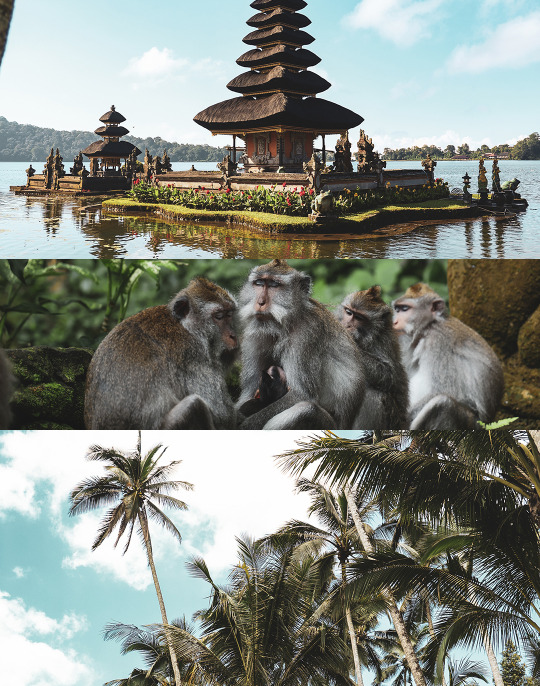
Lost in Bali’s beauty, found in its serenity and Photo TIPS Bali
👉 https://bysumex.com/lost-in-balis-beauty-found-in-its-serenity-and-photo-tips-bali/
Bali is more than just a destination; it’s an experience. From emerald rice terraces to tranquil beaches and vibrant temples, this island whispers serenity to every traveler’s soul. Each corner of Bali invites you to pause, breathe, and soak in the magic. Whether you're chasing sunrises, wandering ancient pathways, or simply basking in the quiet rhythm of the waves, Bali promises a unique kind of peace.
Here are 5 photography tips to capture the best of Bali’s allure:
1. Sunrise and Sunset Are Your Best Friends
Where to shoot:
Sunrise: Mount Batur, Sanur Beach.
Sunset: Uluwatu Temple, Tanah Lot, Jimbaran Bay.
Tip: Use a tripod for long exposures to create dreamy water effects or catch the fiery hues of the sky.
2. Play With Reflections
Where to find them: The iconic Gates of Heaven at Lempuyang Temple (use a reflective surface like a phone for that dramatic effect).
Tip: Early mornings minimize crowds and help you catch clear reflections.
3. Go Wide for Rice Terraces
Where to go: Tegallalang or Jatiluwih Rice Terraces.
Tip: Use a wide-angle lens to capture the terraced layers and emphasize the sweeping landscapes. A drone can elevate your shots to showcase their full scale.
4. Engage With Local Culture
Must-see: Traditional Balinese ceremonies, markets, or dance performances.
Tip: Ask for permission before taking close-ups, and aim to capture the vibrant colors and emotions in natural light.
5. Blue Hour Beach Bliss
Where to shoot: Nusa Penida, Padang Padang Beach, or Seminyak.
Tip: Shoot just before sunrise or after sunset for soft, moody blues. Use a neutral density filter for silky wave effects.
Remember, Bali isn’t just a place to photograph — it’s a destination to feel, to embrace, and to let inspire your soul. Happy snapping! 📸
Have you been to Bali? Share your favorite spots and photo tips below!
#bali #travelblogger #phototravel #filmmaker #photography
1 note
·
View note
Text
Harnessing the Power of Drone Cameras: Transforming Industries with Precision and Efficiency
In the past decade, drone camera technology has evolved from a niche tool for enthusiasts into a transformative force across various industries. Today, drone cameras are integral to sectors ranging from filmmaking and agriculture to construction and disaster management. These aerial devices are equipped with cutting-edge imaging technology, autonomous flight capabilities, and real-time data processing, making them invaluable for businesses looking to increase efficiency, accuracy, and cost-effectiveness.
The Role of Drone Cameras in Industry Advancement Drone cameras have proven to be indispensable in a wide range of applications. Whether it's for capturing cinematic shots, surveying land, or performing inspections, drones provide a level of precision and versatility that traditional methods cannot match. By using best drone camera technology for diverse applications, businesses can streamline operations, reduce costs, and improve safety, all while achieving higher-quality results.
Top Applications of Drone Cameras Cinematography and Filmmaking Drone cameras have revolutionized the film industry by offering filmmakers a tool to capture stunning aerial shots without the need for expensive helicopters or cranes. These drones are equipped with advanced stabilized gimbal technology for cinematic shots, ensuring smooth and steady footage even in high winds or turbulent conditions. With drones, filmmakers can create dramatic, wide-angle shots that enhance the visual appeal of their productions.
Construction and Infrastructure Inspections Construction companies rely on drones to monitor job sites, inspect buildings, and create detailed models of the terrain. With the ability to capture high-resolution imagery and perform 3D mapping, drone cameras offer a more accurate and efficient way to survey land and manage projects. Drones designed for industrial inspections and mapping are also used to monitor the progress of construction, ensuring that every aspect of the project is on track and within budget.
Agricultural Management In agriculture, drone cameras are revolutionizing how farmers monitor crops, analyze soil health, and optimize irrigation systems. Drones equipped with multispectral sensors provide insights into crop conditions that were previously difficult to obtain. By using drones for crop monitoring, farmers can take a proactive approach to farming, resulting in improved yields, reduced resource waste, and more sustainable practices. The agricultural drones with advanced imaging capabilities enable farmers to make data-driven decisions that enhance productivity.
Search and Rescue Operations Drones have become a vital tool in search-and-rescue missions. When disaster strikes, drones equipped with thermal imaging and high-resolution cameras provide real-time aerial views of affected areas, enabling first responders to make faster, more informed decisions. Drones play an essential role in locating missing persons, identifying hazards, and assisting in recovery efforts. Drones designed for disaster response operations are particularly useful in hard-to-reach areas that may otherwise be inaccessible by traditional means.
Advanced Features of Drone Cameras High-Definition Imaging and Sensors Modern drone cameras come equipped with high-resolution cameras capable of capturing 4K video, still images, and thermal or infrared scans. These sensors provide exceptional image quality and allow users to capture detailed visual data from various perspectives. Drones with advanced imaging solutions are used for precision tasks such as surveying, mapping, and inspections, offering an unmatched level of detail and clarity.
Autonomous Flight and GPS Technology Drone cameras have advanced to the point where many are fully autonomous. With built-in GPS systems and sophisticated sensors, drones can fly predetermined flight paths, monitor specific areas, and return home without manual control. This level of autonomy makes drones more efficient and allows them to collect data from vast areas with minimal human intervention. Drones are ideal for industries like agriculture and construction where large-scale monitoring is required.
Real-Time Data Collection and Processing Drones are capable of transmitting live video feeds and real-time data to operators, allowing for immediate analysis and decision-making. In industries such as disaster management and construction, this feature is invaluable. The ability to process and analyze data in real time means that critical decisions can be made swiftly, preventing delays and ensuring safety. Drones with real-time data processing and analysis capabilities are changing how businesses collect and utilize information.
Durability and Weather Resistance One of the most significant advancements in drone technology is the ability to withstand harsh environmental conditions. Modern drones are designed to operate in high winds, heavy rain, and extreme temperatures, making them ideal for a wide range of applications. Drones are capable of performing inspections and collecting data in challenging environments, such as offshore oil rigs or remote agricultural fields. Drones built for harsh weather conditions ensure that operations can continue without interruption.
0 notes
Text
Buy Drones and Action Cameras Online

At AWPRO, we understand the thrill of capturing stunning aerial footage and adventurous moments through drones and action cameras. Whether you're a professional filmmaker, an avid traveler, or a recreational enthusiast, finding the right equipment is essential. This guide will explore the best options for buying drones and action cameras online, focusing on popular models, pricing, and where to find them.
Why Choose Drones?
Drones have transformed the way we capture images and videos. They offer unique perspectives that traditional cameras simply cannot achieve. Here are some key benefits of using drones:
Aerial Photography: Capture breathtaking landscapes and events from above.
Versatile Applications: Ideal for agriculture, real estate, and environmental monitoring.
Recreational Fun: Enjoy flying and exploring new areas from a bird's-eye view.
Popular Drone Models Available at AWPRO
DJI Mini 4 Pro
Features: 4K HDR camera, 34 minutes flight time, ultra-lightweight design.
Price: Approximately AED 3,800.
Why Buy: Perfect for beginners and professionals alike due to its portability and advanced features.
DJI Mavic 3
Features: Hasselblad camera system, up to 46 minutes flight time.
Price: Around AED 8,300.
Why Buy: Exceptional image quality and long battery life make it ideal for serious filmmakers.
DJI Neo Fly More Combo Drone
Features: Dual camera setup, foldable design.
Price: AED 1400.
Why Buy: A budget-friendly option for casual users.
The Rise of Action Cameras
Action cameras are compact devices designed to capture high-quality video in extreme conditions. They are perfect for:
Sports Enthusiasts: Record your adventures while skiing, surfing, or biking.
Travel Vloggers: Lightweight and easy to carry for capturing every moment on the go.
Underwater Filming: Many models are waterproof, making them ideal for marine activities.
Top Action Cameras Available at AWPRO
GoPro HERO13 Black
Features: 5.3K video resolution, advanced stabilization technology.
Price: AED 1200.
Why Buy: Renowned for its durability and exceptional image quality.
GoPro Max 360
Features: Dual-screen design with impressive stabilization.
Price: AED 2,000.
Why Buy: Offers great performance straight out of the box with minimal setup.
INSTA360 X4
Features: 360-degree recording capability.
Price: AED 1,800.
Why Buy: Ideal for creating immersive content with its unique shooting capabilities.
AWPRO Online Store
At AWPRO, we offer a curated selection of drones and action cameras from top brands like DJI, GoPro, and Insta360. Our user-friendly website allows you to browse products easily, compare prices, and read customer reviews before making your purchase.
Tips for Buying Drones and Action Cameras Online
Read Customer Reviews: Gain insights into product performance from other users.
Check Return Policies: Understand the return process in case the product doesn't meet your expectations.
Conclusion
Buying drones and action cameras online has never been easier with platforms like AWPRO providing a comprehensive selection of high-quality products. Whether you’re looking for a top-of-the-line drone or an affordable action camera, our guide will help you make informed decisions that enhance your photography and videography experiences.
0 notes
Text
The Ultimate Guide to Drones: Everything You Need to Know with Remote Flyer
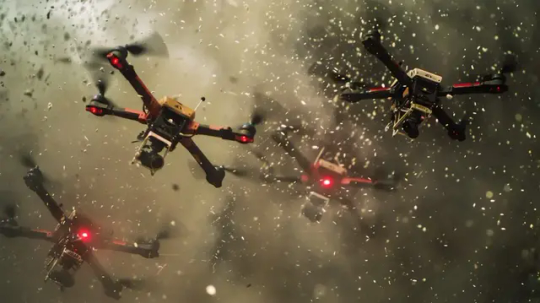
In recent years, drones have become a hot topic among tech enthusiasts and hobbyists alike. Whether you're a beginner looking to explore this fascinating hobby or an experienced pilot eager to learn more about the latest drone technology, you’ve come to the right place. Welcome to Remote Flyer, your go-to resource for all things drone-related!
At Remote Flyer, we are passionate about flying drones and have dedicated this platform to bringing you the best advice, reviews, and information on drone models, tips for beginners, flying techniques, and much more. If you’re considering diving into the world of drones, this guide will help you understand the basics, the best drones for various uses, and how to fly like a pro!
What Are Drones?
Drones, or Unmanned Aerial Vehicles (UAVs), are aircraft that don’t require a human pilot onboard. They are controlled remotely and can be equipped with cameras, sensors, and other specialized equipment. Drones are commonly used for aerial photography, surveying, mapping, deliveries, and even recreation. They come in various shapes, sizes, and specifications, making it easier than ever to find one that suits your needs.
Why Fly Drones?
Flying drones is more than just an exciting hobby. It’s an experience that allows you to see the world from a completely new perspective. Whether you’re capturing stunning aerial photographs, exploring remote landscapes, or simply enjoying the thrill of flying, drones offer endless opportunities for fun and creativity.
At Remote Flyer, we believe that flying a drone is a serious hobby for many, but it can also be a lucrative career for those looking to enter industries such as film production, agriculture, surveying, or real estate. The drone industry is booming, and now is the perfect time to get started. Whether you want to make a hobby of it or turn it into a profession, there’s something for everyone in the world of drones.
Types of Drones
When shopping for your first drone, it’s important to understand the different types available. Drones can vary greatly in terms of size, features, price, and intended use. Here’s a breakdown of the most common types:
Recreational Drones
If you’re just starting out, recreational drones are a great choice. These drones are lightweight, easy to fly, and often come with beginner-friendly features like altitude hold and automatic takeoff. They're perfect for casual flying, and many come with cameras to capture photos and videos from the sky.
Camera Drones
If your goal is to capture high-quality aerial photos or videos, then a camera drone is the way to go. These drones are equipped with professional-grade cameras that offer incredible resolution and stability, making them ideal for photography enthusiasts or even aspiring filmmakers.
Racing Drones
Racing drones are designed for speed and agility. These drones are built for enthusiasts who want to compete in drone racing events. They are highly customizable, allowing for precise tuning to suit individual racing styles.
Professional Drones
These drones are meant for serious professionals working in fields such as surveying, agriculture, mapping, or cinematography. They often come with advanced features like thermal cameras, GPS, and long battery life, making them perfect for commercial use.
Toy Drones
If you’re looking for an affordable option to start your drone journey, toy drones are a good choice. While they may not have the advanced features of higher-end drones, they provide a fun flying experience at an entry-level price.
Choosing the Right Drone
With so many options available, choosing the right drone can be overwhelming. At Remote Flyer, we recommend considering the following factors to help you make the best decision:
Purpose: What do you plan to use the drone for? Are you interested in aerial photography, racing, or just casual flying?
Skill Level: Are you a beginner or a seasoned drone pilot? Some drones are designed specifically for beginners, while others are made for more experienced pilots.
Budget: Drones can range in price from under $100 to thousands of dollars. Determine your budget before making a purchase.
Camera Quality: If you’re interested in aerial photography or videography, look for a drone with a high-quality camera and stabilization features.
Flight Time: Consider how long the drone can fly on a single charge. Flight time typically ranges from 20 minutes to over an hour, depending on the model.
Tips for Flying Your Drone
Flying a drone can be a thrilling experience, but it’s essential to do it safely and responsibly. Here are some tips to help you become a skilled drone pilot:
Start Slow: If you're a beginner, take the time to practice flying in an open area away from obstacles. Start with basic maneuvers, such as hovering and slowly moving forward, backward, and sideways.
Understand the Controls: Familiarize yourself with your drone’s remote control. Most drones have two sticks for controlling altitude, direction, and rotation. Practice until you feel comfortable with the controls before attempting advanced maneuvers.
Follow Local Regulations: Always make sure you're flying in accordance with local laws and regulations. This includes flying below a certain altitude, staying clear of restricted airspace, and respecting the privacy of others.
Pre-Flight Checklist: Before each flight, check the drone’s battery, propellers, and camera (if applicable). Make sure everything is in working order to avoid any issues during flight.
Fly Responsibly: Drones should be flown in safe, open spaces. Avoid flying over crowds, near airports, or in weather conditions that could make flying unsafe.
Why Choose Remote Flyer for Your Drone Needs?
At Remote Flyer, we’re committed to providing you with all the information you need to make the best decisions about drones. Our blog covers a wide range of topics, from drone reviews to flying tips, so you can stay up-to-date with the latest trends in the drone industry.
We also participate in the Amazon LLC Associates Program, meaning we earn a small commission on products purchased through our links, helping us continue to provide high-quality content for you. Whether you’re buying your first drone or upgrading to a professional model, Remote Flyer is here to guide you every step of the way.
Conclusion
The world of drones is vast and exciting, and at Remote Flyer, we’re here to help you navigate it with ease. Whether you’re a beginner or a seasoned pro, drones offer endless opportunities for fun, creativity, and even career growth. So, grab your drone, head to the skies, and let your journey begin!
Stay tuned to Remote Flyer for more tips, reviews, and everything you need to know about flying drones. Happy flying!
1 note
·
View note
Text
Discover DJI Drones for Sale: The Best Deals on Mavic Series at Mobileciti
DJI has long been a leader in drone technology, offering advanced features, reliable performance, and stunning visuals in a variety of models. Among the most popular are the DJI Mavic drones, known for their compact design, powerful capabilities, and superior camera quality. If you're looking for DJI drones for sale, Mobileciti is your go-to destination for the best deals on these high-tech gadgets.
Why Choose DJI Drones?
DJI drones are renowned for their stability, ease of use, and top-tier camera systems. Whether you're an aspiring photographer, a seasoned videographer, or just someone who enjoys flying for fun, DJI drones provide a user-friendly experience without compromising on performance. The Mavic series, in particular, stands out for its portability and professional-grade features, making it a favorite among drone enthusiasts and content creators alike.
The Mavic drones are equipped with advanced flight modes like ActiveTrack, QuickShots, and SmartCapture, which allow for impressive, cinematic shots with minimal effort. Additionally, their intelligent obstacle avoidance system and long battery life ensure a smooth and safe flying experience.
DJI Mavic: The Ideal Choice for Every Pilot
The DJI Mavic series includes a range of models to suit different skill levels and needs. From the entry-level Mavic Mini, which is perfect for beginners, to the professional Mavic 3, packed with industry-leading features, there's a Mavic drone for everyone. The Mavic 3, for example, comes with a dual-camera system that includes a wide-angle and telephoto lens, offering unparalleled versatility for photographers and filmmakers.
One of the biggest advantages of Mavic drones is their portability. The compact, foldable design means you can easily carry your drone anywhere, whether you're traveling the world or just heading to the park for a quick flight. The dji drones mavic are also equipped with cutting-edge sensors and software, which enable them to maintain stable flight even in challenging weather conditions.
Get Your DJI Drone at Mobileciti
For the best deals on DJI drones for sale, Mobileciti offers a wide selection of Mavic models at competitive prices. Whether you're looking for a beginner-friendly option or a professional-grade drone, Mobileciti provides expert advice and excellent customer service to help you choose the perfect model. With fast shipping and trusted after-sales support, you can trust Mobileciti to provide you with the best shopping experience for your next drone purchase.
In conclusion, if you’re looking for a DJI Mavic drone, Mobileciti is the place to shop for great prices and top-quality service. Take to the skies with a DJI drone and elevate your photography and flying experience to new heights.
0 notes
Text
Revolutionizing Cinematic Creativity: Bold Filmmaking Trends in NYC & NJ
TITLE: Embracing Innovative Filmmaking Techniques in New York and New Jersey
Adopting new approaches in filmmaking goes beyond being trendy; it's imperative, particularly in the vibrant locations of New York and New Jersey. Filmmakers here are blending time-honored practices with the latest technologies to establish their positions in a crowded field. Prominent in this progression are narrative techniques and digital innovations that have pushed the limits of cinematic creativity.
The heart of independent filmmaking beats with originality and risk-taking. Creators are applying the timeless Rule of Thirds, carefully positioning subjects to create visually striking compositions that engage the audience. This essential method, when combined with lively camera maneuvers like tracking shots and dolly zooms, infuses scenes with vitality, pulling viewers further into the unfolding story.
Dynamic Camera Movement
For contemporary filmmakers, introducing dynamic camera movements is crucial. These techniques go beyond mere spectacle; they amplify the story's emotional and narrative richness. Whether it's a tracking shot trailing a main character through a vibrant city or the close focus of a dolly zoom, these movements facilitate a profound connection between the audience and the characters. Such camera techniques adeptly convey the emotional essence of each scene to viewers.
Drones and Aerial Shots
Moving past traditional filming methods, drone cinematography is opening new vistas in the film world. With technological advancements, drones are now within reach, providing stunning aerial views without large expenses. From majestic landscapes to precisely executed action sequences, drones offer a variety of shots once limited to those who could afford helicopter footage. This transformation is embraced by filmmakers in NYC and NJ, who often include drone footage to visually enrich their films.
The integration of virtual reality (VR) and augmented reality (AR) is pushing the bounds of creativity, allowing audiences to engage with films in a more captivating manner. These technologies provide a first-person viewpoint that can intensify emotional involvement and empathy in storytelling. Filmmakers in New York and New Jersey are pioneering the inclusion of VR and AR, weaving them into narratives that gain depth and engagement through these multidimensional storytelling devices.
Non-Linear Narratives
Beyond physical techniques, independent filmmakers excel by exploring unique narrative forms. Non-linear narratives escape the confines of chronological order, weaving stories that are layered and intricate, prompting viewers to engage actively with the plot and untangle its multiple dimensions. This approach enhances viewer engagement as they assemble the story's pieces from various angles and timelines.
Innovative Post-Production
Advancements in post-production further facilitate groundbreaking storytelling approaches. Advanced editing tools enable montages and rapid cuts, techniques that compress time and highlight emotions swiftly. Color grading and cutting-edge lighting methods, like LED panels, contribute to a film's distinctive style and atmosphere, adding a level of refinement that boosts the story's visual appeal.
Best practices in innovative filmmaking unite emerging technologies with foundational strategies. For example, using drones for distinctive viewpoints requires meticulous attention to stabilization and movement, ensuring maximum realism. Virtual production, using LED walls and real-time engines, crafts environments that are stunningly lifelike, often reducing the need for extensive post-production work.
Drone Tips: Maintain stable camera work and natural movement to enhance the realism of your footage.
VR/AR Integration: Aim to create interactive experiences that elevate viewer engagement through first-person storytelling.
Color Grading: Customize the mood and tone of your film with detailed color grading to effectively convey varying emotional nuances.
Ultimately, the adoption of innovative techniques in filmmaking is revolutionizing storytelling methods. For filmmakers situated in New York and New Jersey, embracing these innovations is crucial for crafting powerful, unforgettable films. From drones to virtual sets, the resources accessible today enable storytellers to create works that deeply connect with audiences, underscoring that filmmaking is as dynamically evolving as the technology that underpins it.
#FilmmakingTechniques #InnovativeFilm #DroneShots #VirtualReality #IndependentFilm
Stay at the forefront of filmmaking innovation. Visit https://www.kvibe.com for more tips and tech updates.
0 notes